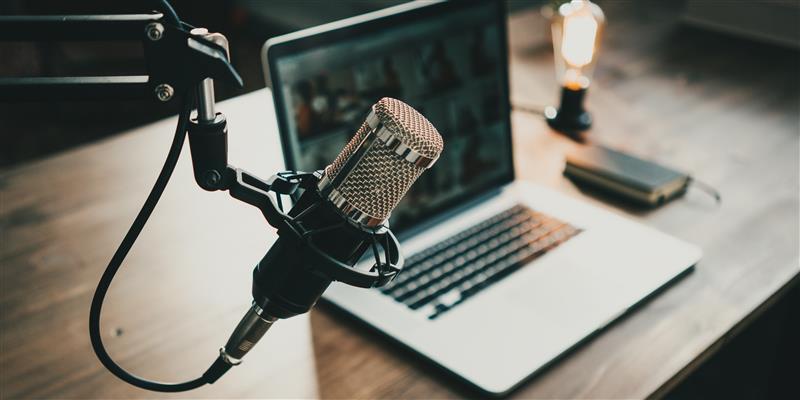No one likes to have their favourite podcast experience ruined by adverts that are TOO LOUD.
Equally, at Sport Social we know that advertising is an important way to support and reward creators who put their hearts and souls into everything they do.
That’s why we want to ensure that neither listening experience or carefully crafted content is spoilt by a lack of standards.
What is the industry standard?
In podcasting, there IS a generally accepted, but not very well communicated (or adhered to) industry standard that podcasts should be mastered to. They are:
Stereo Mix: -16LUFS & -1db (True Peak*)
Mono Mix: -19LUFS & -1db (True Peak*)
*The highest level of an audio signal.
SSPN will always do its best to ensure that any advertising placed onto the network is around this range, and requests that your content should also hit those marks!
What is the difference between LUFS and dB?
Understanding how loudness is measured is an important skill when making podcasts and producing well-balanced mixes. LUFC (Loudness Units Full Scale) and dB (decibels) both measure “loudness” but they serve different purposes and aren’t interchangeable.
Decibels (dB) are a unit of measurement that shows the amplitude or level of audio. This can tell you how loud an audio signal is but doesn’t account for how the human ear perceives loudness.
LUFS (Loudness United relative to Full Scale) is a way to measure “perceived loudness” over a period (for example a podcast). It takes into account human hearing sensitivity and provides an average measure across a piece of audio.
Many people use only dB’s to control loudness, whilst this is a great measure for technical control, it does not allow for listener experience – and that’s where LUFS come in.
Ok, so how do I manage my levels?
How you control LUFS and dB can depend on what software you use to edit your podcast. Here is how to do it on some of the most common. There is also more useful info and some handy “how to” videos via the (always useful) podnews website.
Adobe Audition:
- Open Match Loudness Panel
Go to Window > Match Loudness. - Import Your Audio
Drag your final mix into the panel. - Scan for Current Loudness
Click Scan (volume + magnifying glass image) to analyse the file’s loudness. - Set Loudness Target
Click Match Loudness Settings and:- Choose ITU BS.1770-3 or EBU R128.
- Set Target Loudness to -16 LUFS.
- Set True Peak Limit to -1 dB.
- Run the Process
Click Run to apply the changes. - Export Your Mastered File
Use File > Export > Export Multitrack Mixdown.
📌 Tip: Use the Loudness Meter effect on the master track to monitor LUFS in real time.
GarageBand (Note: You’ll need to install a plug in):
- Export Your Mix
- Ensure your mix peaks around -23 LUFS.
- Export as WAV (24-bit) via Share > Export Song to Disk.
- Create a New Mastering Project
- Import the WAV file into a new GarageBand project.
- Enable the Master Track (Track > Show Master Track).
- Apply Limiters
- Add 3–4 limiters to the Master Track.
- Set Gain to +4 dB, Output Level to -0.5 dB.
- Use a LUFS Meter Plugin
- Install Youlean Loudness Meter (free).
- Place it at the end of the plugin chain.
- Monitor Integrated LUFS and True Peak.
- Final Export
- Export again as WAV or MP3.
- Compare loudness with professional tracks.
📌 Tip: Turn off Auto-Normalization in GarageBand’s advanced settings.
Audacity:
- Select Your Audio
Highlight the entire track or region. - Apply Loudness Normalization
Go to Effect > Volume and Compression > Loudness Normalization. - Set Parameters
- Choose Perceived Loudness.
- Set target to -16 LUFS (stereo) or -19 LUFS (mono).
- Disable “Normalize stereo channels independently”.
- Enable “Treat mono as dual-mono” (for mono tracks).
- Peak Normalization (Optional)
Use Effect > Normalize to set peak level to -1 dBFS. - Export Your File
Use File > Export > Export Audio and choose:- Format: MP3 or WAV
- Bitrate: 128 kbps (MP3)
- Sample Rate: 44100 Hz
📌 Tip: Always normalize after compression and EQ for best results.
Hindenburg Journalist Pro:
- Import and Edit Your Audio
- Use auto-leveling on import.
- Apply fades, EQ, and compression as needed.
- Use Voice Profiler
- Apply consistent vocal tone across episodes.
- Set Loudness Target on Export
- Go to File > Export.
- Choose Podcast Loudness Target (e.g., -16 LUFS).
- Hindenburg automatically applies loudness normalization and peak limiting.
- Monitor Levels
- Use built-in meters or plugins to verify LUFS and True Peak.
📌 Tip: Hindenburg is designed for podcasting and handles loudness normalization automatically during export.
